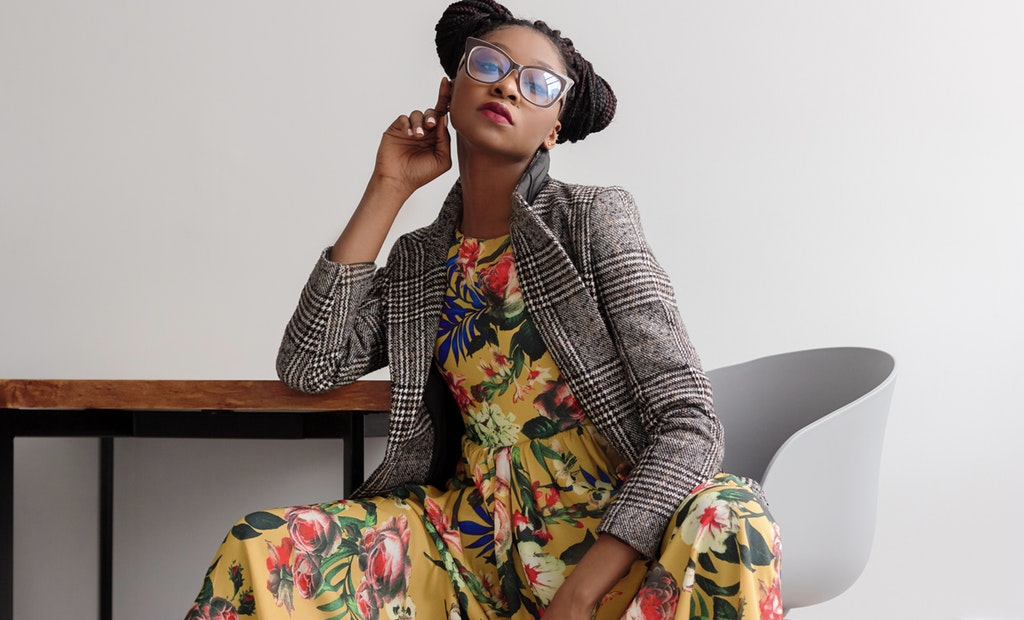Reimagined styles from African Fashion Month

African fashion, renowned for its vibrant and bold designs, draws inspiration from the continent’s rich culture and history. Every African pattern bears a distinct meaning, with even the colours used symbolising something unique. Historically, clothing creation served as a form of expression, reflecting the personality and life experiences of the wearers.
Intriguingly, these patterns were fashioned from leaves, fermented mud, or through other special techniques. Simultaneously, the fusion of colours represented the cultural identity of a specific country or region, narrating tales of status or hierarchy. For instance, blue symbolises harmony and peace, while green, a symbol of prosperity, is frequently observed in African clothing.
From yesteryears’ styles to today’s trends, here is how African culture has influenced contemporary clothing showcased at African Fashion Month.
Vivid and exuberant colours
Indeed, colours play a crucial role in African clothing, which is why most ensembles showcased at the event were brilliantly vibrant. African clothing labels have embraced these tones without veering into the realm of kitsch. Pink, blue, and orange became the stars of the show, featured in feminine yet assertive panelled trousers and suit designs.
While single-colour garments were presented at the show, the extraordinary designs, unique fixtures and materials lent these clothes a distinct allure. The emphasis in African clothing leans more towards accentuating the body’s features rather than altering them to conform to a standard norm. This is why even the simplest hued dresses looked spectacular due to their designs.
Energetic textiles
Another African-inspired facet of clothing is the diversity of textiles and materials employed to create unique garments. Each region of the continent contributes its special textile designs. For instance, in West Africa, cotton and silk are used for strip weaving, whereas in Central Africa, Raphia palm weaving is standard.
Printed textiles were a must at African Fashion Month, as they genuinely encapsulate the essence of the region’s fashion. Fortunately, anyone can purchase African print fabric and create dashikis (tunics) or kaftans (long robes) that empower them and enhance cultural expression beyond the African sphere.
Playful and feminine designs
Designs in African clothing culture are paramount for self-expression. Kente motifs, for instance, were predominantly used for religious or political connotations and included bright-coloured panels sewn together. In contrast, Bògòlanfini was worn by men who were hunters and women who became mothers.
While geometric designs are common in African clothing, flowers, leaves, and other nature-based compositions are also popular. Of course, modern techniques weren’t absent during African Fashion Month, and they were primarily incorporated in dresses, blouses, and jumpsuits. A fascinating array of African designs can also be found on AfricanFabs, featuring products that display ancient symbols, tie-dye, and wax models.
Extravagant suits
Suits have recently shed their bland appeal, with designers experimenting with colours, forms, and variations. The menswear-inspired style has expanded, enabling women’s suits to break boundaries and evolve beyond office attire.
At African Fashion Month, suits were adorned in the bravest tones and paired with bold undertones. African culture also influenced their designs with elaborate layouts and innovative blueprints. Suits are no longer exclusively formal and can be incorporated into any outfit to truly reflect an individual’s personality.
It’s all about the shapes
While basic African clothing models are relatively straightforward, some of the latest designs include bouffant styles that enhance the body’s features without overshadowing the face, for example. Following this structural rule, African Fashion Month was the perfect occasion for designers to conceive the most inventive shapes reflecting the African spirit.
Draped coat dresses, vests with bouffant sleeves, and sets with only pockets dominated the runway. What makes these outfits unique is the selection of accessories, from capes and hats to earrings and ruffled sleeves.
But is it acceptable for people to wear African prints and garments?
Regrettably, with concerns about cultural appropriation rising, people may question whether wearing clothes from a specific culture is respectful. However, these clothes can be worn by those who comprehend their origins and meaning, and acknowledge their culture. This form of respect is part of cultural appreciation, which includes awareness of the culture but not necessarily engagement with it. For example, wearing an Ankara fabric dress or skirt is generally acceptable, but adopting ceremonial or religious costumes might provoke questions.
To put it bluntly, what might be considered cultural appropriation is companies marketing turbans, for example, as everyday accessories and promoting them as their unique product. Hence, it’s critical to know how not to breach the boundaries of cultural appropriation and respect people’s culture and history while feeling comfortable in the clothes one chooses to wear.
Cultural appropriation may not be limited to wearing clothes, but such actions sadly reinforce stereotypes of people. As a result, people may associate African clothing exclusively with dark-skinned people, which is further linked with less developed countries and other harmful aspects. This lack of knowledge adversely affects various cultures, reducing them to narrowed opinions, making it challenging for these countries to raise awareness about their cultures, beauties, and unique histories.
Avoiding cultural appropriation is always possible by being respectful and understanding precisely the reason behind one’s approach to a particular culture. For example, it’s always safe to credit the source of inspiration for wearing clothes and ensure they are worn appropriately. Conversely, wearing specific clothes to mock a certain culture is decidedly insulting to the citizens and locals.
However, one must tread carefully when posting images of oneself on the internet in certain attire, even if one’s intentions were good. In these times, some people might perceive almost anything as cultural appropriation, which deters curious people from learning more about African cultures, for instance, but this also applies to Asian ones.
Final thoughts
African fashion influenced trends during African Fashion Month by exhibiting impressive designs, colours, and forms in women’s outfits. Given the array of beautiful designs, fabrics, and layouts, wearing African clothing must be done respectfully and responsibly to avoid cultural appropriation.
The editorial unit




















Facebook
Twitter
Instagram
YouTube
RSS